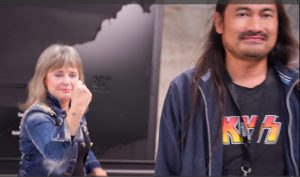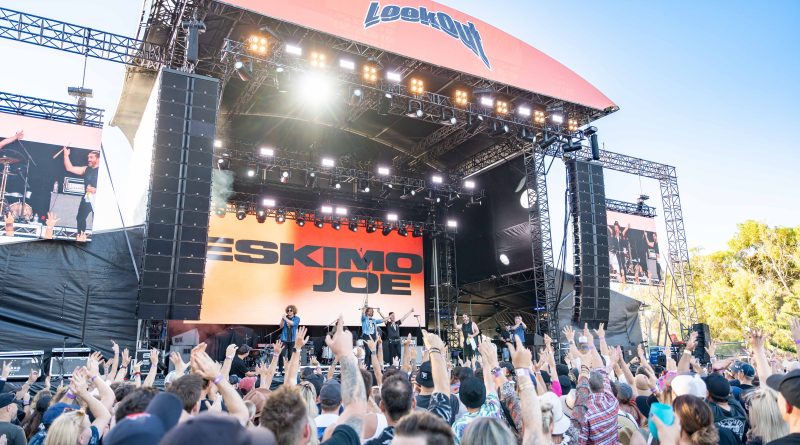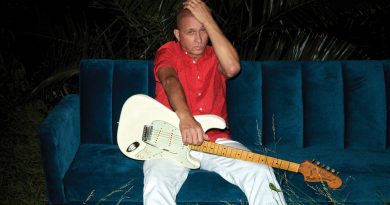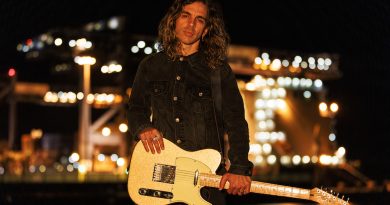Interview: Kav Temperley of Eskimo Joe on Miracle Cure
by Sheldon Ang and Mia Oughton
HOPE is not only one of our most powerful emotions, but it is also the driving force behind our resilience and ability to overcome adversity.
In a recent interview, Sheldon Ang and Mia Oughton sat down with Kav Temperley, the frontman of the 8-time ARIA Award winner Eskimo Joe, to discuss the band’s latest single, “Miracle Cure,” a track that intertwines themes of hope and vulnerability. It confronts our flaws and searches for that remedy to our bleeding souls through a love interest, also known as the miracle cure.
The conversation further explored the art of songwriting through the power of the subconscious, and the delicate knife-edge balance required for an edgy live performance that Eskimo Joe are known for. It is a masterclass, after all, Eskimo Joe have enjoyed 35 ARIA nominations in their career – a number only surpassed by Silverchair, Powderfinger, Kylie Minogue and John Farnham.
You’ll also hear it first on Sheldon Ang Media – a national tour to commemorate the 20th anniversary celebration of their album “Black Fingernails, Red Wine.
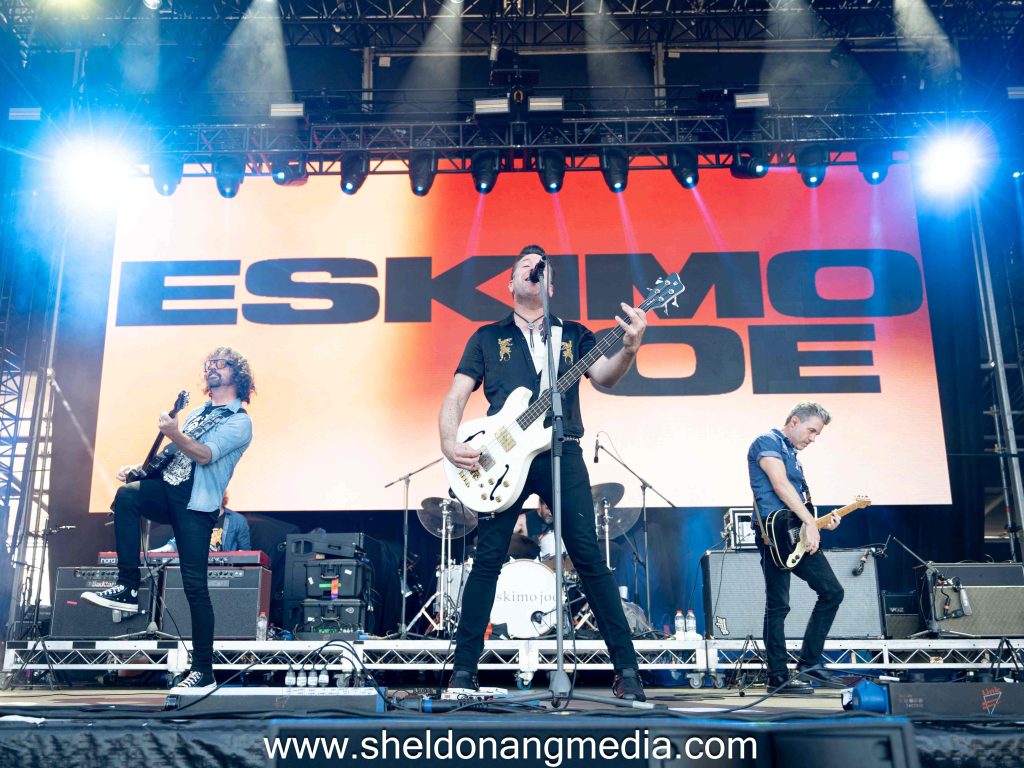
Sheldon: Six months ago, I was on Triple M Albany on their breakfast show. We spoke about the last single, The First Time. I noticed that single has that festival vibe… an ode to nostalgia. Miracle Cure says love (and hope) conquer everything. But both singles have that signature of Eskimo Joe.
So did it come naturally to manifest the sonic personification of the single?
Kav Temperley: I guess so. When we did The First Time, we’d gone through what I call the “Eskimo Joe – lost years”, where we’d been on a hiatus, and then we’d come back and we’d put out two songs in that time and enjoyed it. But it wasn’t until The First Time that we’d gone back out and played to live audiences again.
And there’s something tangible when you’re in a room with a whole lot of people and that’s how our music evolved in the first place. It started in the bedroom, then we started playing in front of people, and then we did something on stage and we’d be like, ‘Oh, it works. Let’s put that into the next song.’
So it evolved, and each time we got bigger as a band and the audiences got bigger and the songs got bigger – we were always reacting to whatever was in front of us.
And the time we got to The First Time again, we just played this whole bunch of amazing summer festivals, and we were like, ‘Oh, that’s right’. People know who we are. And that sense of identity as a band, you get reminded like, ‘Okay, cool, that’s who we are.’ So we did that.
Fast forward to doing the song Miracle Cure. We’d finished a whole bunch of big summer festival shows, which is kind of how we wrote The First Time – talking about that sonic signature. It came out of that, but Miracle Cure was written backstage as we did during this acoustic tour around the country.
After we had done all these big rock n roll festivals, the three of us just hit it the road playing all of these kinds of country town halls and doing this two-hour kind of storytelling show. And as we were backstage, just sitting on the couches with our acoustic guitars, I’d be like, ‘Oh, I’ve got a bit of an idea.’
And we’d work on it a bit in the next day, we’d be like, ‘Oh, how about this,’ and we just keep building on it. And so by the time we’d finished the 30-date tour, we pretty much had a song ready to go and then did a few demos. And here we are putting it out, which is pretty exciting.
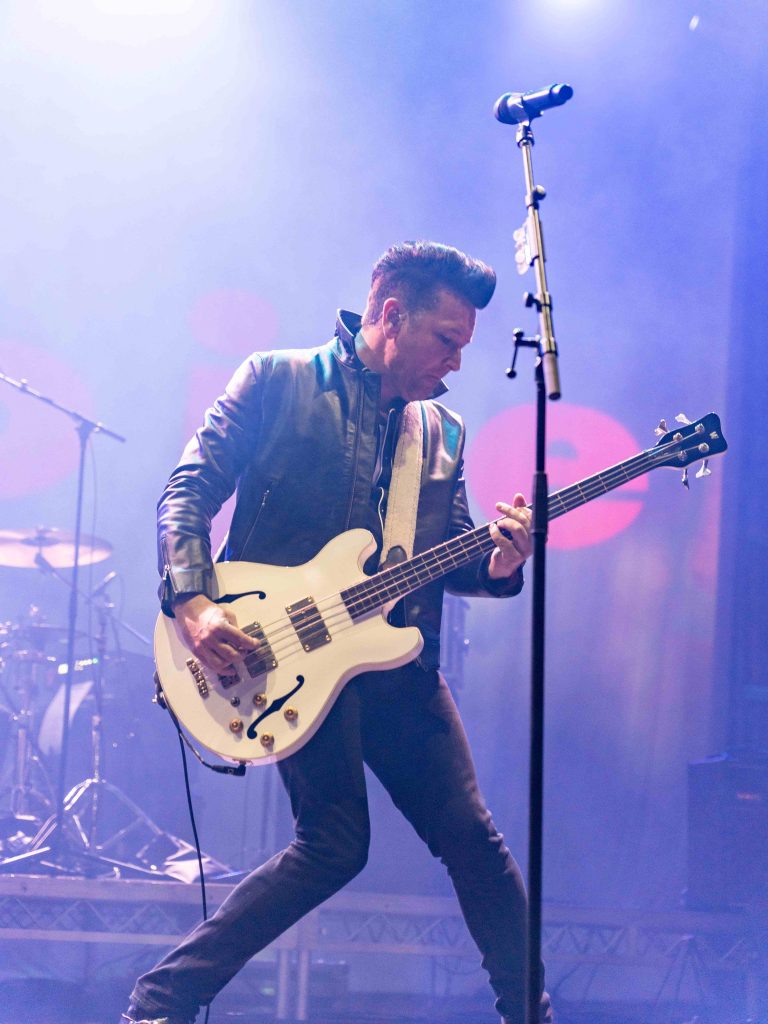
03:59
Mia Oughton: Interestingly, you mentioned The First Time because I was looking at the lyrics of Miracle Cure, with lines such as, I only feel it when you’re running through my veins. Give me just enough rope… the kind of metaphors linked to addiction or self-destruction. The First Time came out in 2024, just the year before – it’s almost like you’re taking these rose coloured glasses off. And I was wondering about the choice behind those metaphors. Do you think there is any kind of similarity between addiction and love?
Kev Temperley: It’s actually really interesting that you mention that because I hadn’t really put two and two together that The First Time was all about this kind of love through rose colored glasses story.
I guess there are similarities between addiction and love, but using that metaphor to kind of talk about love in a way… that really the song is about hope. So, Miracle Cure is the idea that hope is the most powerful emotion that we have.
And often the way that it works in people is that we give that hope to someone else, and we can hold you, and make sure that it’s safe – that’s a vulnerable thing to do. Maybe I’m giving too much away about myself, but a lot of the time, we’re these self-destructive creatures. We’re set for a doomsday scenario and all points in time.
A lot of the time when we do give that hope away to someone in this great vulnerable moment, we have this expectation that we’re going to blow it all up… it’s all going to end in tears. But luckily, so far it hasn’t in my life. I’m pretty happy. I think that the idea of the blood boiling and someone using drugs as an analogy for the rush that you get from love is probably a tried-and-true formula. Obviously, it means something to me.
06:13
Sheldon Ang: And the lyrics are very intense. You spoke about drowning – metaphorically speaking, and being on the edge. Tell us about that particular moment when you felt like that.
And tell us about that someone, who ultimately became your…miracle cure – and I believe there’s only one right answer!
Kav Temperley: Yeah, my wife became my miracle cure, for sure. We always say; because we’re both like complete weirdos, we like to boast to each other that we only feel normal when we’re with each other.
That’s not to say we can’t function in the real world with other people. But as far as that kind of feeling and the essence of where that line came from, I’m a big believer in this kind of idea of the subconscious; flowing out, and then you have to turn that into the storyline because the subconscious has everything that has happened to us, and it’s always bubbling away in the background. And when that stuff comes onto the page, it always makes for the best songs. I think is because everything feels like you have it looked at. It’s like waiting for the kettle to boil, waiting for that lightning strike moment of inspiration.
If you do that, it can be fun in the back end of songwriting. But if it’s the initial idea, you’re looking at this idea of like, ‘What do we want to write about’ that can feel a bit stinky as soon as you put it out there. So a lot of my ideas come from like voice memos.
So I think when we first sat down to do Miracle Cure, it came from a voice memo. I didn’t know what I was feeling at that point in time because one of the stupidest things I ever did was that I didn’t name any of my voice memos. So it’s just says the location of where I am, which is probably like most people in the world. But I sang this version of the chorus into my phone, and I don’t know what I was thinking at the time, but I remember when I played it to Joel, he was like, ‘Oh, that’s a cool idea.’
And then it all kind of grew out from there. So I think having that essence of an idea that comes in a real place, I didn’t know what place I was in when I came up with that idea. I think that is really important for good songwriting.
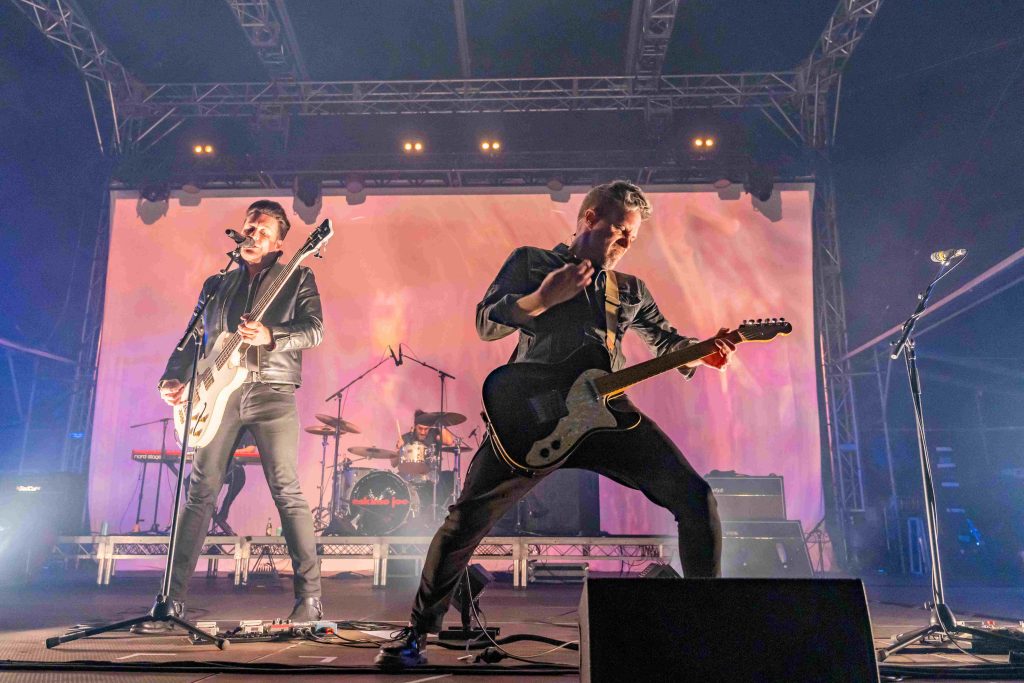
00:08:40
Mia Oughton: Beyond the lyrics, and looking more into the inspiration, Eskimo Joe released the full clip for Miracle Cure. In the past, the band used Fremantle as an inspiration for From the Sea, and you’ve just filmed the music video at the Old Customs Fremantle House. What’s the significance behind the location choice, and how does Australian culture influence the sound and the image of the band?
Kav Temperley: That’s probably like a subject I probably would have shied away from when I was a bit younger, writing songs like From the Sea. I think when we wrote that record, we’re in Fremantle for a long period of time. It’s hard to explain, but Fremantle has a tangible feeling to it.
You guys are from Perth, you know how it is. It has that vibe. Some people love it or hate it. But you know I personally love living here because there is a real, tangible creativity to the place. But I think when I first was doing From the Sea, I was really inspired by telling these ordinary stories about myself and my friends and lovers and that kind of stuff.
And that’s really where that came from. But we made a decision in the early days of Eskimo Joe to become a Fremantle band. And that meant owning the location where we were from. And so, as far as filming – back to your question, what’s the significance of filming it in the old customs House?
Part of it is that it’s next door to my studio (chuckles). So I was like, ‘That looks like a great place to do a video clip.’ But no, it’s a really cool space that we use for all kinds of stuff. I’m really lucky that I have the Art Source, which is where my studio is. And there’s Studio 42 and the rest of the space is for the other visual artists.
So, creating in this space and then we’ve got this main gallery space in the middle where everyone puts on their art shows. I’ve done photoshoots in there. I’ve recorded in there. We just did a video clip in there. But as we were writing this song, we would say, we were going through all these country towns all over Australia and we ended up the vast Australian landscape, seeped into the feeling behind this song.
My whole aesthetic that I was going for, from the songwriting to the video clip to the photoshoot that we ended up doing was this idea of Australian gothic. What I mean by that is there’s something really significant in the way that we are as Australians because there’s the First Nations who lived in this place first, and then you had prisoners who became the citizens of this place.
When you have these situations, like in America at the end of the Civil War when the whole thing fell apart and something had to fill that vacuum. And if you look at America, it was filled with religious fanaticism and all of these bizarre churches that popped up.
In Australia, you have a similar thing. We had to fill this great vacuum, this divide between the First Nations people and this next generation of Australians who came along. And I think there’s something really significant in our story in that aspect. And so from everything from the sound to this kind of like this semi kind of religious lyric in the verses, to the look of the video clip, which was inspired by Picnic at Hanging Rock and Robert Eggers (an Australian novel by Joan Lindsay) and Nosferatu (a 2024 Gothic horror film that serves as a remake of the 1922 silent classic Nosferatu: A Symphony of Horror, which was itself inspired by Bram Stoker’s Dracula)
I just love this idea of Australian gothic, and I’m still obsessed with it. I’m sure I managed to kind of load that straight onto my band members. And they were like, ‘Sure sounds good to me.’ But, I think I’ll probably keep running with that big solo project I do next, because I think there’s a world to explore there.

12:40
Sheldon: Speaking of locations, the band have performed at the likes of Red Hot Summer Tour…as well as with West Australian Symphony Orchestra. Do you have a favourite venue or concerts that you would love to do it again?
Kav Temperley: With the symphony orchestra shows, they’re mind-blowing. Any time you get to play with an orchestra is wicked. You can’t just take the grin off your face – this 75-piece orchestra behind you as you’re singing. So playing at the Perth Concert Hall with the orchestra was amazing.
Doing that same concert at Kings Park was absolutely stunning. And playing at this Red Hot Summer tour that we just finished – I mean, this is some of my favourite shows we played. And that’s a lot to do with just because it’s my joy is the three of us. But we have session players who come out, who play the records with us live.
And one of those session players is a guy called Paul Keenan. He played with us all through the Black Fingernails Red Wine era. He then went away, had many, many children, came back again, and is playing with us. But having him on drums – it’s a vibe. And we’ve got Timothy Nelson, who’s an amazing musician and songwriter in his own right, who plays with us on keyboard.
So just the combination of people is great because we go on stage and we’d make a joke, ‘Guys, I don’t mean to get you too excited, but this is going to be the greatest show we’ve ever played in our lives.’ And we say that every day that we go on with this attitude, that this is going to be the greatest show we ever played.
And you know what? It’s cool. You get on there and you play in front of people and you give it your best. Again, we just played to sold out crowds on this Red Hot Summer Tour. And we’re, we’re pretty competitive. We always want to be the best band on the day, but in a healthy way. We’re not that sabotaging anyone’s gear, but we get on there and treat it like a sport – we want to be the winning team every time. We just played at Sandalford Winery for the first time, and that was incredible. What a great show we had.

14:52:
Sheldon Ang: Have you seen The Fast and Furious – Part 1?
Kav Temperley: (Laughing) Do you mean the one where they, they get these multimillion-dollar cars and steal some DVD players?
Sheldon: In a scene, Vin Diesel’s character says – he lives his life a quarter of a mile at a time, and in those 10 seconds, he feels free. Do you feel free like that on stage when you’re in front of 10,000, 20,000, 30,000 people or more?
Kav Temperley: It’s probably a bit more complex than whatever goes on in Vin Diesel’s head. But, it’s a knife edge, You can only relax on stage if you’re really well rehearsed. And so everything has to be thought out. You have to be prepared for the best possible show.
And then when you get on stage, you have to forget that to a point. You can’t be too well rehearsed. But you need to get to the point of well-rehearsed that you’re using muscle memory. You don’t think about it, but then if you don’t think about it at all, you mess up and the show falls to pieces.
So you got to find this kind of knife edge. And I guess that’s that place of freedom, you know? And it sounds very restricted, but sometimes parameters, the most important thing to help is, be free, I think.
16:13
Sheldon Ang: Speaking of live performance, next year is the 20th anniversary of the album Black Fingernail, Red Wine. So will there be a 20th anniversary album tour next year…like what we saw in 2022?
Kav Temperley: Yes, definitely. I mean, Black Fingernails, Red Wine was such a big album for us. And a lot of people who got into us. A lot of people discovered us when that album came out.
We were pretty much indy kids up until that moment. And then we kind of crossed over to this bigger audience. So it’s a really important record for us for many, many reasons. Like I said, we just finished these Red Hot Summer Shows. We’ve just put out a new song. But we’ll probably save a bit of our energy until next year, where we’ll be.
Yeah, we’ll do it. I don’t know exactly what form it’s going to take, but we’ll do some big celebrations around that record for sure.
Sheldon Ang: There you go, guys. You heard it first on Sheldon Ang Media.

17:15
Mia Oughton: So you’ve referred to this kind of live performances where it’s just you, the band and your acoustic guitars as Buskimo Joe.
And I was wondering, upon releasing the new single if there would be a reappearance of Busker Mojo any time in the near future?
Kav Temperley: Oh, look, I think you might have stumbled onto a great marketing idea here. Maybe we could just do like. And as we go around the country… we’ll just busk and, see how we go.
When we put together the acoustic tour, we realized we only one gear with, Eskimo Joe acoustic thing, which was Buskimo Joe, which is literally a 2 string guitar and a stomp box and me jumping around. So we had to kind of figure out all these different, you know, gears like maybe three different gears that we could do to make an acoustic show interesting over two hours.
But when we first started doing it, I love just playing a song with an acoustic guitar because I think it’s the essence of the tune. And it also changes the way that people perceive that story. You can tell more, more of a long-winded story leading up to that song as well to make it land.
So that’s, that’s the kind of Buskimo Joe experience. I love it. I think my band members have grown to love it, but I’ve had to drag them kicking and screaming.
18:37:
Sheldon Ang: Hey mate, it’s such a great honor to have a chat with you again, mate. Yeah. So hopefully we’ll see you very soon. And, if you do need a photographer, mate, for your tour, let me know. I’ll be there.
Kav Temperley: I’ll let you know for sure. I mean, I have no doubt I’ll see you in the front row anyway, but, yeah, I think y thank you so much. Thanks, guys. Legends. I’ll see you later. Bye.


CONNECT WITH ESKIMO JOE:
FACEBOOK | INSTAGRAM | TIKTOK | YOUTUBE | X SOUNDCLOUD | SPOTIFY | APPLE MUSIC
About the Writer: Sheldon Ang, photographer, writer and the founder of Perth-based Sheldon Ang Media (est. May 2022) has been accredited to over 170 of the hottest acts including Taylor Swift (ERAS Tour in Sydney), Coldplay (Perth), Backstreet Boys, KISS, Iron Maiden, RHCP and P!NK with reviews shared by the likes of Belinda Carlisle, UB40, Delta Goodrem, The Wiggles and Toni Childs on social media. He has interviewed rockers Suzi Quatro (pictured below), Angry Anderson, Ace Frehley (KISS), John Steel (The Animals), Frank Ferrer (Guns N Roses), Phil X (Bon Jovi), Andrew Farris (INXS) plus over 70 artists. He’s also a contributor on Triple M Radio as a music journalist.
